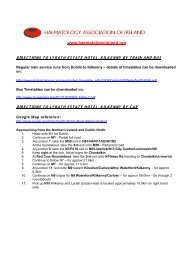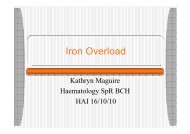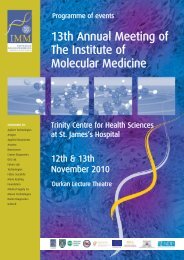Guidelines on Diagnosis and Treatment of Malignant Lymphomas
Guidelines on Diagnosis and Treatment of Malignant Lymphomas
Guidelines on Diagnosis and Treatment of Malignant Lymphomas
You also want an ePaper? Increase the reach of your titles
YUMPU automatically turns print PDFs into web optimized ePapers that Google loves.
Tumour Lysis Syndrome<br />
Tumour Lysis Syndrome (TLS) may occur in patients with<br />
lymphoma at instituti<strong>on</strong> <strong>of</strong> therapy. It is characterised by<br />
hyperphosphataemia, hyperkalaemia, hyperuricaemia,<br />
hypocalcaemia <strong>and</strong> acute oliguric renal failure. Patients at risk are<br />
those with pre-existing renal impairment, a high LDH, a high<br />
tumour burden <strong>and</strong> aggressive lymphomas such as Burkitt’s<br />
lymphoma. It is important to note that in patients with aggressive<br />
lymphoma, TLS may occur in those treated solely with<br />
corticosteroids.<br />
All patients with high grade disease or bulky low grade disease<br />
should be adequately hydrated <strong>and</strong> given allopurinol prior to<br />
starting treatment. Patients at high risk for TLS should be<br />
managed with intensive intravenous hydrati<strong>on</strong> to promote a brisk<br />
urine output, alkalinisati<strong>on</strong> <strong>of</strong> urine, <strong>and</strong> rasburicase. Specific<br />
therapy for electrolyte imbalance <strong>and</strong> haemodialysis may be<br />
required. Serum calcium, phosphate, magnesium, potassium,<br />
creatinine <strong>and</strong> uric acid should be m<strong>on</strong>itored every 2 – 6 hours<br />
for the first 24 hours <strong>and</strong> as indicated thereafter.<br />
68
















